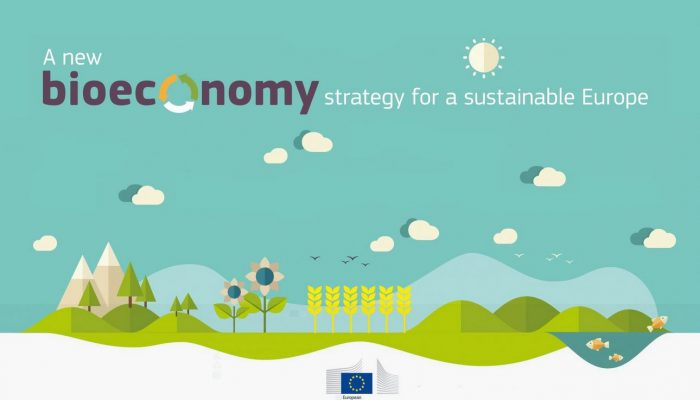
The EU Bioeconomy Strategy has sustainability and circularity at its heart. It promotes the renewal of our industries, the modernisation of our primary production systems, and the protection of the environment, including biodiversity.
We enhance the knowledge base for policymaking on the bioeconomy.
Learn more on EU policies relevant to the bioeconomy: key strategies, legislations and financing instruments in one place!

The EU Bioeconomy Strategy has sustainability and circularity at its heart. It promotes the renewal of our industries, the modernisation of our primary production systems, and the protection of the environment, including biodiversity.
The EU Bioeconomy Strategy has a cross-sectoral character and holistic perspective and is linked to many sectoral policies. Likewise, many EU policies are crucial enablers for the transition to a fair and sustainable bioeconomy. Policies of high mutual relevance with the bioeconomy are for example environmental, pollution and climate policies, the Common Agricultural Policy, the Common Fisheries Policy, industrial and SME friendly policies, consumer policies, energy policies, R&I policies through the EU’s Framework Programmes for research and innovation. Together, the Bioeconomy Strategy and Action Plan and the sectoral policies mutually reinforce each other and jointly address interlinked challenges. The following list, far from being exhaustive, includes policies from the most relevant policy areas for the bioeconomy.
Environment and climate change are at the centre of the Green Deal, as well as the EU Bioeconomy Strategy. The following EU policies within the environment and climate domain aim to advance solutions that maximize the potential of biological resources, including ecosystem, thus enhancing prosperity for people and planet. This includes solutions that improve circularity of biological resources, forests', soils' and water's health but also solutions that increase carbon storage and provision of other ecosystem services, that defossilise or otherwise make processes more sustainable, or that increase the supply of biological resources or their added value.
Ensuringe food and nutrition security is one of the objectives of the EU Bioeconomy Strategy. Therefore, agricultural, rural development and food-related policies are closely interconnected with EU bioeconomy. The Action Plan of the 2018 Bioeconomy Strategy supports the deployment of local bioeconomies, focusing on sustainable food and farming systems as well as on the development of rural areas.
The blue economy, encompassing all economic activities based on or related to the ocean, seas and coasts, includes a large variety of economic sectors such as fisheries and aquaculture, coastal tourism, shipping, ports, and marine renewable energy. The following EU policies support a sustainable development of the fisheries, aquaculture and algae sectors. They aim to preserve natural resources while boosting efficiency and innovation.
The EU industrial policy supports bio-innovation to enhance the sustainability and competitiveness of the European industrial system as well as its strategic autonomy and resilience. In parallel, it aims to create opportunities for good jobs as well as fair distribution of added value along value chains.
Bioenergy is the main renewable energy source used in the EU, providing a significant contribution to the defossilisation of the EU energy and transport systems. The following policies define key targets and sustainability criteria for biomass feedstock used for energy purposes. The goal is to deliver high greenhouse gas emission savings and not cause deforestation or degradation of habitats or loss of biodiversity, while promoting efficient use and avoid unintended impacts on other uses of biomass.
Research and innovation are essential to strengthen and scale-up the bio-based sectors. The EU makes available several funding programmes, private-public partnerships and initiatives to unlock the potential of the bioeconomy.
Multiple sources of funding can operationalise the goals of the EU Bioeconomy Strategy. Different EU funding and financing tools can enable and scale-up solutions to realise the transition to a competitive, regenerative, and fair economy, benefitting from the potential of the industrial bioeconomy to efficiently converting biomass into sustainable and smart products and services.